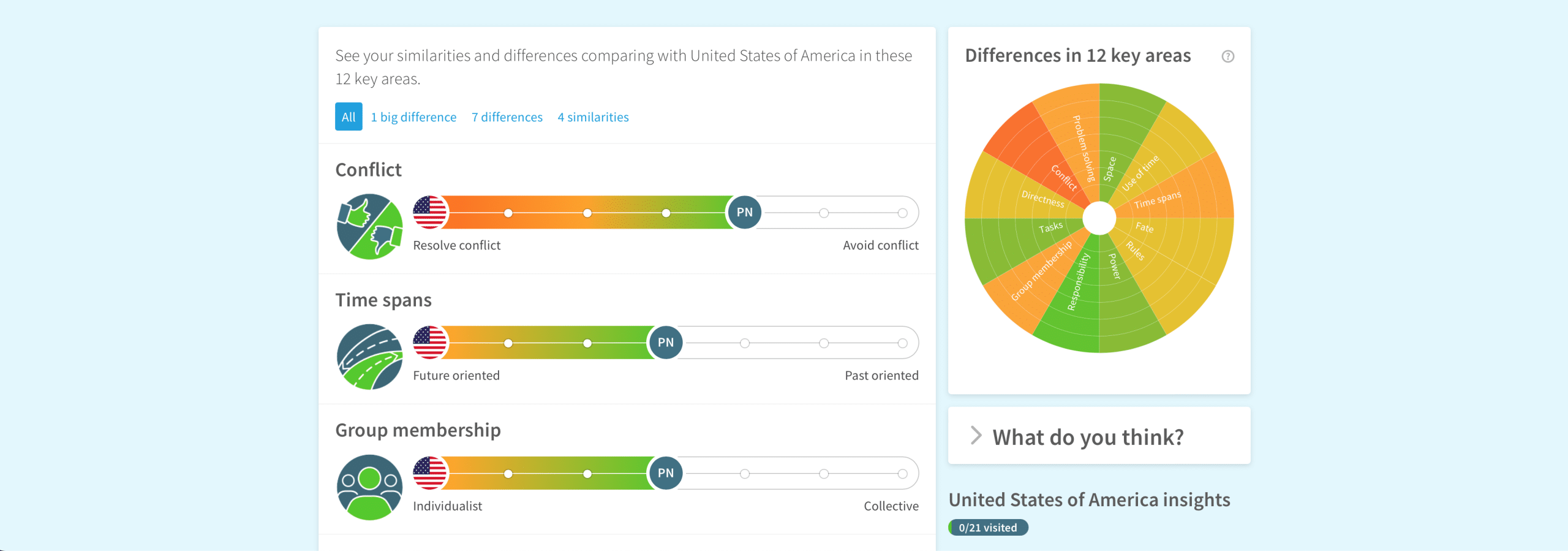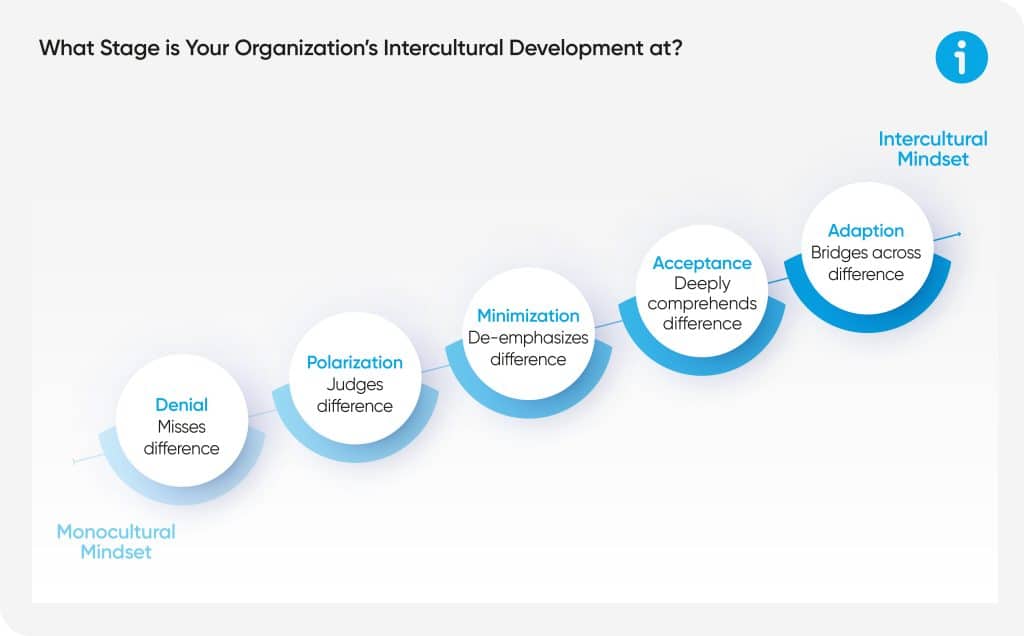In our new, highly interconnected world, cultural competence—the ability to understand and interact effectively with people from different cultures—is becoming more than just a buzzword; it’s a crucial skill for thriving. But as our 16-year anniversary intercultural awareness research reveals, the profile of today’s employees is becoming more complex too.
Of the 915 employees who participated in our research, 82% had travelled abroad, 31% had lived abroad, and 72% spoke more than one language. Specifically, the cultural identity of each individual, which includes ethnicity, nationality, language spoken, religion followed, and even gender – crucial for building pre-existing beliefs – is becoming harder to disentangle.
Recognizing this, Learnlight proudly introduces an Intercultural Assessment tool designed to empower employees with bespoke insights into cross-cultural differences, beginning with their own unique cultural identity as the foundation.
Why Intercultural Skills?
Before we dive into the specifics of the Intercultural Assessment, let’s take a moment to reflect on the importance of fostering cultural awareness in the workplace.
Executives with high cultural intelligence (CQ) are more adept at promoting inclusivity and driving business innovation. Cultural competence not only minimizes miscommunication but also improves efficiency and market reach. Seventy seven percent of the employees who participated in our research agree on the importance of cultural competence, but 55% also believe that to address differences, we should disregard them, focusing instead on our similarities.
Cultural competence also helps develop a cultural mindset that aids in recognizing and accepting each other’s differences while removing judgement to deeply comprehend one another. Only then can we promote a workplace culture that fosters psychological safety and truly embrace what each of us has to bring.
Here’s an overview of the stages one is said to go through as they develop such skills:
Introducing Intercultural Assessment
Bearing the above in mind, imagine having a tool at your fingertips to recreate your employees’ individual cultural profiles and help them compare it to those of their peers?
That’s precisely what this Intercultural Assessment does.
By providing feedback on 12 work-relevant intercultural dimensions, such as conflict resolution, problem-solving, use of time, tasks, directness, and responsibility, this tool goes beyond merely highlighting differences across cultures. It facilitates a deep understanding of the nuances and similarities of one’s individual cultural identity at work, compared to one’s peers.
Key Benefits at a Glance
- Global Comparison: Covering 96 countries, this tool offers a comprehensive overview of cultural differences worldwide, allowing employees to compare their own cultural profile with those they collaborate with most frequently.
- Countless Use Cases: The tool can be used as a standalone resource, in combination with a one-off trainer debrief session for actionable takeaways, or as a starting point for a tailored intercultural training program, such as Working with Different Cultures.
Virtual settings demand intentional communication to foster connections and build trust; otherwise, they risk becoming merely transactional. Similarly, for international assignees, failure to adjust to the local culture and environment is a key stress factor.
Armed with bespoke insights into cultural differences, employees can make more informed decisions. Schedule a personalized demo with our experts and discover first-hand the tailored solutions we offer to help you. This Intercultural Assessment could mark the beginning of an intentional journey toward embracing diversity and inclusivity in your business.































